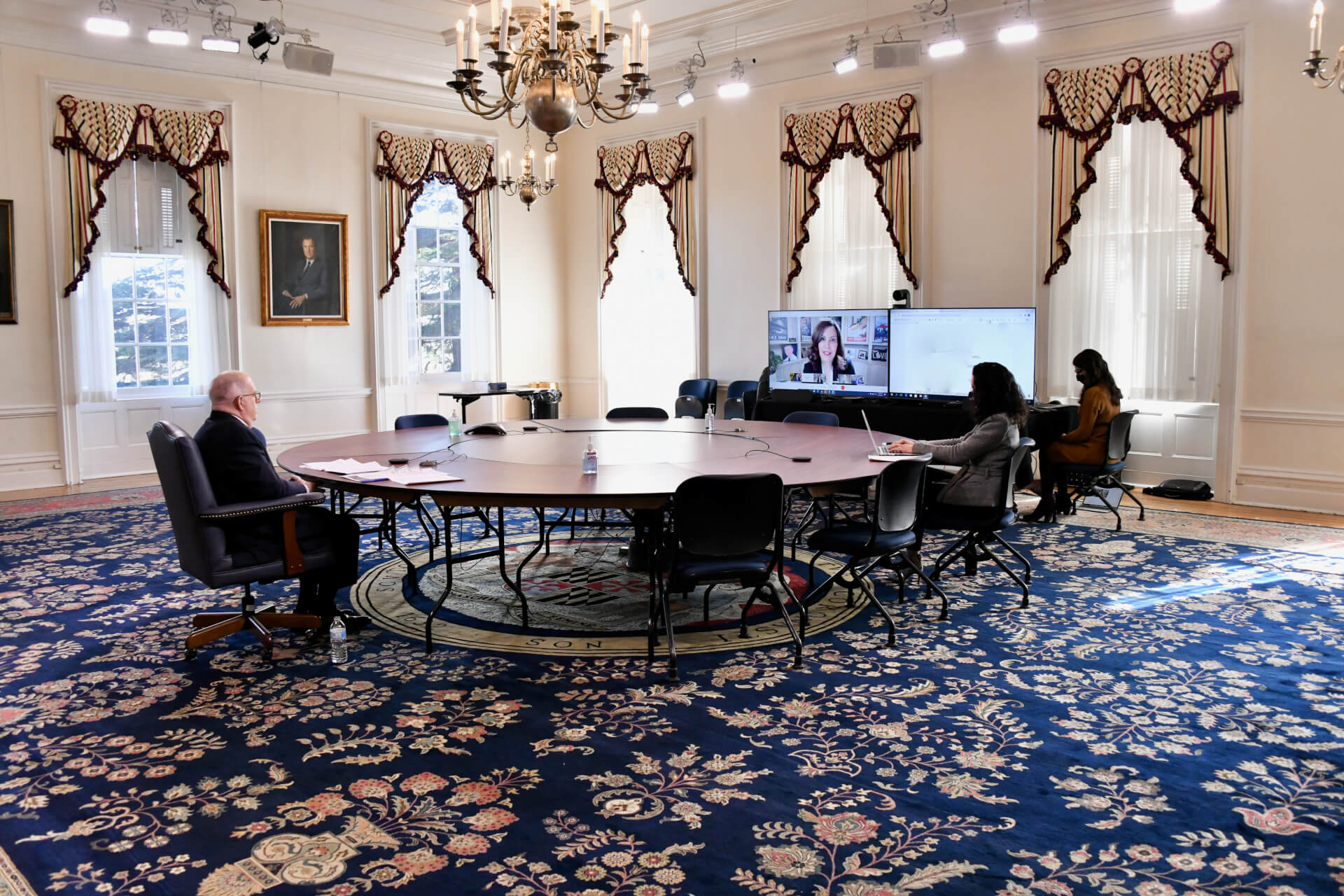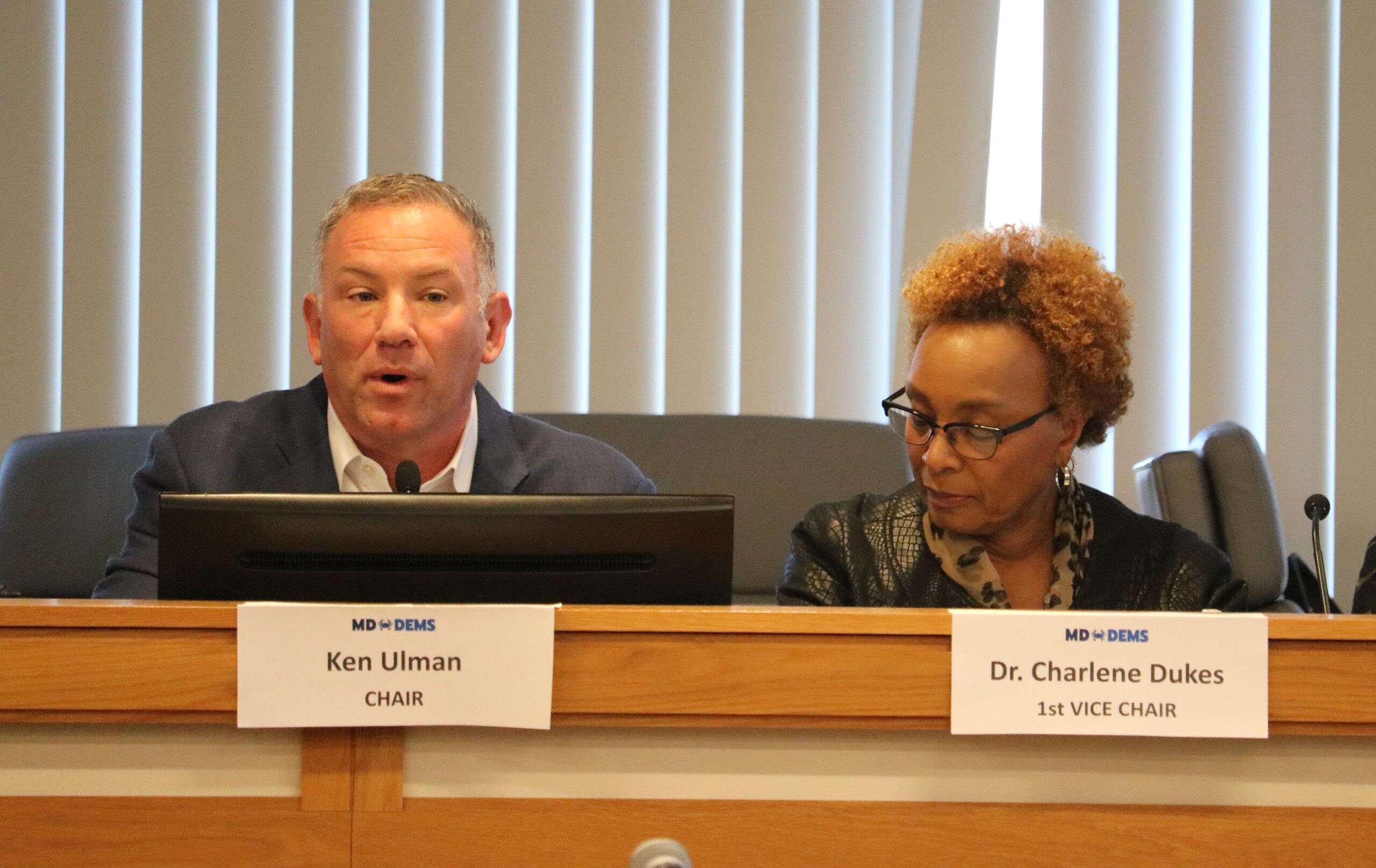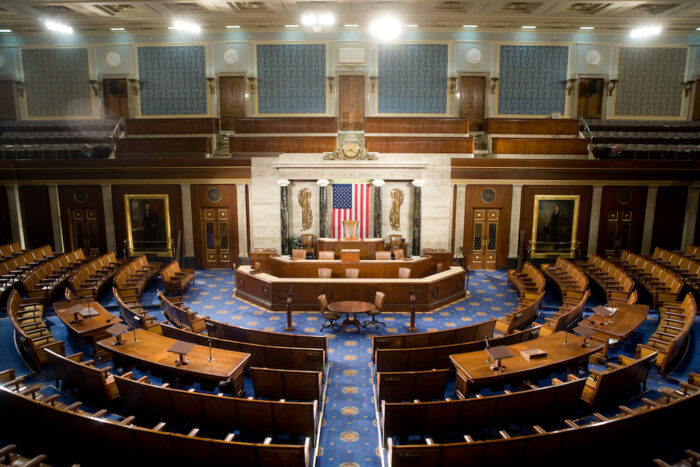Hogan Catches Flak for Red Line Cancellation at U.S. Senate Hearing on Infrastructure

Maryland Gov. Lawrence J. Hogan Jr. (R) testified virtually before the U.S. Senate Wednesday about President Biden’s push for a major new infrastructure package. He was part of an all-star panel of state and local leaders that included Michigan Gov. Gretchen Whitmer (D) and Denver Mayor Michael Hancock.
But Hogan ran into surprising criticism during the hearing by the Senate Environment and Public Works Committee about his decision in 2015 to cancel the Red Line light rail project.
Hogan and Whitmer were invited as governors known for proposing ambitious, if not always successful, infrastructure improvement plans. The two will be among the governors slated to meet with Biden and U.S. Transportation Secretary Pete Buttigieg on Thursday.
In most respects, the hearing was largely harmonious. Senators who could decide the fate of any Biden infrastructure package seemed open to his priorities, particularly the president’s emphasis on replacing vehicles that run on gas and diesel with ones that use electric power.
The hearing marked the first time the Senate panel formally discussed some of the ideas put forward by Biden for new infrastructure spending. The committee oversees transportation policy but not the question of how to pay for projects.
But when it came to the question of who should oversee new federal transportation money — states or city governments — there was far less agreement.
Hogan, who made infrastructure his signature issue during his recent tenure as chairman of the National Governors Association, told the senators that Congress should continue to distribute money among states based on formulas already in federal law.
Offering states and cities the chance to apply for competitive grants instead, an approach that the Obama administration used, adds too much uncertainty, Hogan said.
“It’s hard with discretionary funding to make long-term planning decisions,” he explained. “Having flexibility to do what we want but having the certainty of the funding formulas is something governors would prefer.”
Senators challenge Hogan
Hogan said the Maryland Department of Transportation works with local communities to determine which projects should move forward.
“The states can help prioritize,” he said. “There’s no question about it that there’s a lot of need. We can’t do everything at the same time. So we want to make sure that we all agree on the priorities.”
But two Democratic senators questioned whether that state-centric approach worked, citing the example of Hogan canceling the Red Line transit project in Baltimore in 2015.
U.S. Sen. Benjamin L. Cardin, a Democrat from Maryland, said the current system made it difficult for cities like Baltimore to attract new projects.
Hogan has repeatedly pushed using partnerships with private companies to build infrastructure under his watch, whether to build the Purple Line rail line in the suburbs of Washington, D.C., or to expand the capacity of the Capital Beltway.
But those kinds of projects are unlikely to work in Baltimore, Cardin said.
“It seems to me that in many respects it’s more challenging to use public-private partnerships in urban centers. And for a city like Baltimore… transit development has become more challenging,” Cardin said.
Hogan told him that Baltimore could use a partnership with private companies to build a transit network, but it would “have to be attractive to the private sector.”
Sen. Jeff Merkley, an Oregon Democrat, asked Hogan whether he supported a goal of the Biden administration that 40% of federal spending should benefit disadvantaged communities. Merkley said the goal could prevent situations like the initial construction of Washington, D.C.’s Metro system, which initially served predominantly white neighborhoods but took decades to reach many of its predominantly Black neighborhoods.
“The [Baltimore] Red Line has the same national reputation,” Merkley told Hogan.
The project was designed to help connect low-income, Black neighborhoods to job centers. It also would have brought investments into long-neglected areas of the city and improved air quality for their residents.
“But that is a project you chose to cancel and put the funds instead in predominantly white communities,” Merkley said.
“Well, Senator,” Hogan shot back, “I would totally disagree with your assertion for a number of reasons. But we don’t have time to debate that here this morning.”
The governor said that more than 50% of the state’s transportation spending had occurred in underserved neighborhoods. The Purple Line, he noted, runs through Prince George’s County, where almost two-thirds of the residents are Black. Sixteen of its stops, he added, are in minority communities.
Whitmer said she supported the emphasis on racial equity for federally funded projects, but she did not commit to a numeric goal.
More criticism at home
While Hogan was testifying before the Senate from the Governor’s Reception Room in the State House, he was met with criticism at home.
Comptroller Peter V.R. Franchot (D) chided Hogan for missing Wednesday’s Board of Public Works meeting, his second absence in a row.
“I hope it’s not becoming a habit,” said Franchot, a candidate for governor in 2022. “I hope that the governor will return to the board whenever he thinks it’s appropriate.”
Hogan has largely been absent from Board of Public Works meetings since turning day-to-day control of state government over to Lt. Gov. Boyd K. Rutherford (R) since declaring a state of emergency due to the COVID-19 outbreak almost a year ago.
During the Maryland Senate’s morning floor session, Education, Health and Environmental Affairs Chairman Paul G. Pinsky (D-Prince George’s) lamented the fact that the Hogan administration has consistently failed to testify on bills pending before the legislature, a perennial issue which came up during the morning’s debate on a bill about providing telehealth services through Maryland schools.
Unlike past administrations, when governors would come to testify on key pieces of legislation from time to time and departments regularly filed memos in favor or against pending bills, agencies now tend to file letters of information or concern, but do not state the administration’s position outright.
Pinsky said he did not want younger senators to think this was the norm.
“We have relied on the agencies and the administrations, no matter what the party, to give us information so we can do an effective job,” Pinsky said. “And I personally think it’s an abdication of responsibility. And it hurts all of our work, whatever the party, when you don’t get clear indication of what is easy to implement, what is impossible to implement, and what is the better way to implement.”
He said he hoped it was not too late to see a change from the administration.
“I’d say to the second floor, if you want to take a position, take a position. We gladly welcome, we encourage you to take a position and tell us what you think,” Pinsky said. “Now that means you might have to live with that position. But that’s part of being involved in the electoral arena.”
The issue also came up at a virtual rally held by opponents of the controversial proposal to widen the Capital Beltway and Interstate 270, a top Hogan priority. One lawmaker noted that the governor has never testified before the General Assembly.
“He has yet to come before the General Assembly or any of us to talk about this project,” said Del. Jared Solomon (D-Montgomery). “Yet this is now his second or third opportunity on Capitol Hill, which just shows where his priorities lie.”
At the same event, Sen. James C. Rosapepe (D-Prince George’s) said problems with the Purple Line light can be traced to a lack of attention to detail by top state officials.
“Gov. Hogan loves to do press conferences,” the lawmaker said. “He and his people do not love to actually do the detailed work of making projects work.”
Hogan’s spokesman Michael Ricci batted down the criticism Wednesday evening.
“Should the governor have turned down the invitation from the Congress to testify and advocate on behalf of the state? That’s his job,” Ricci said. “Listening to a bunch of whining and complaining isn’t. The Annapolis machine needs to get over itself.”
Editor’s Note: This story was updated to include a statement from the governor’s office.
Daniel C. Vock is a Washington correspondent for States Newsroom. He can be reached at [email protected].





 Creative Commons Attribution
Creative Commons Attribution